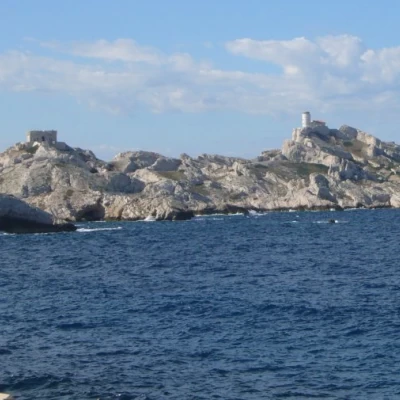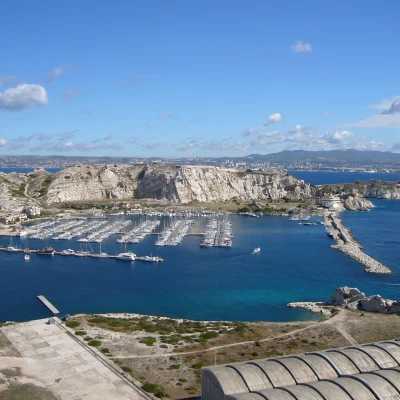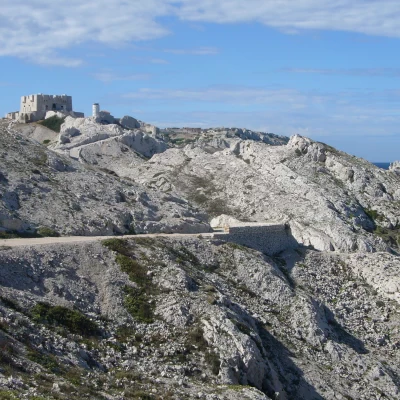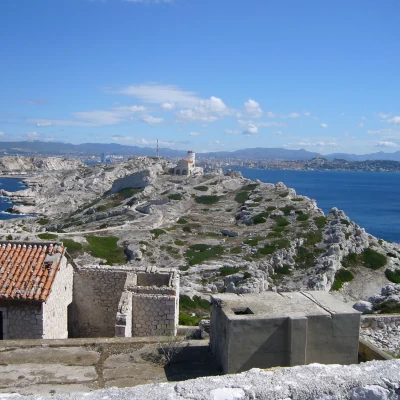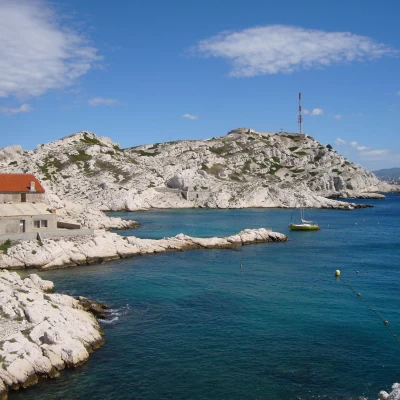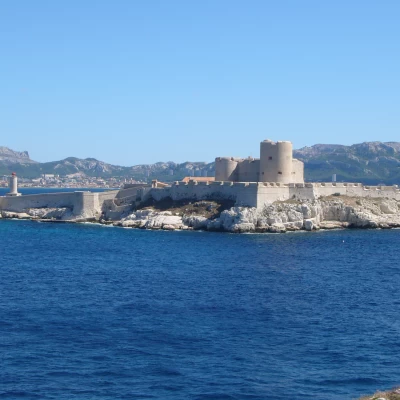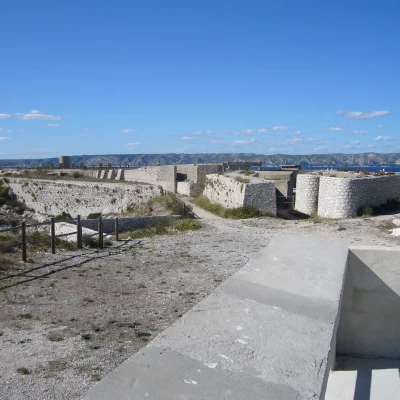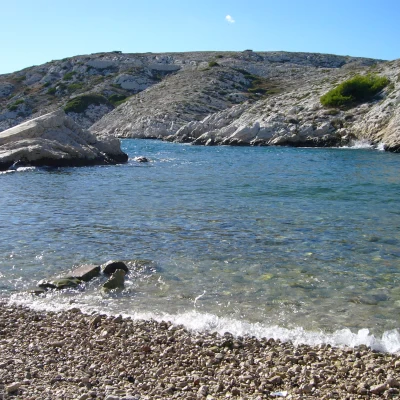The Frioul Islands
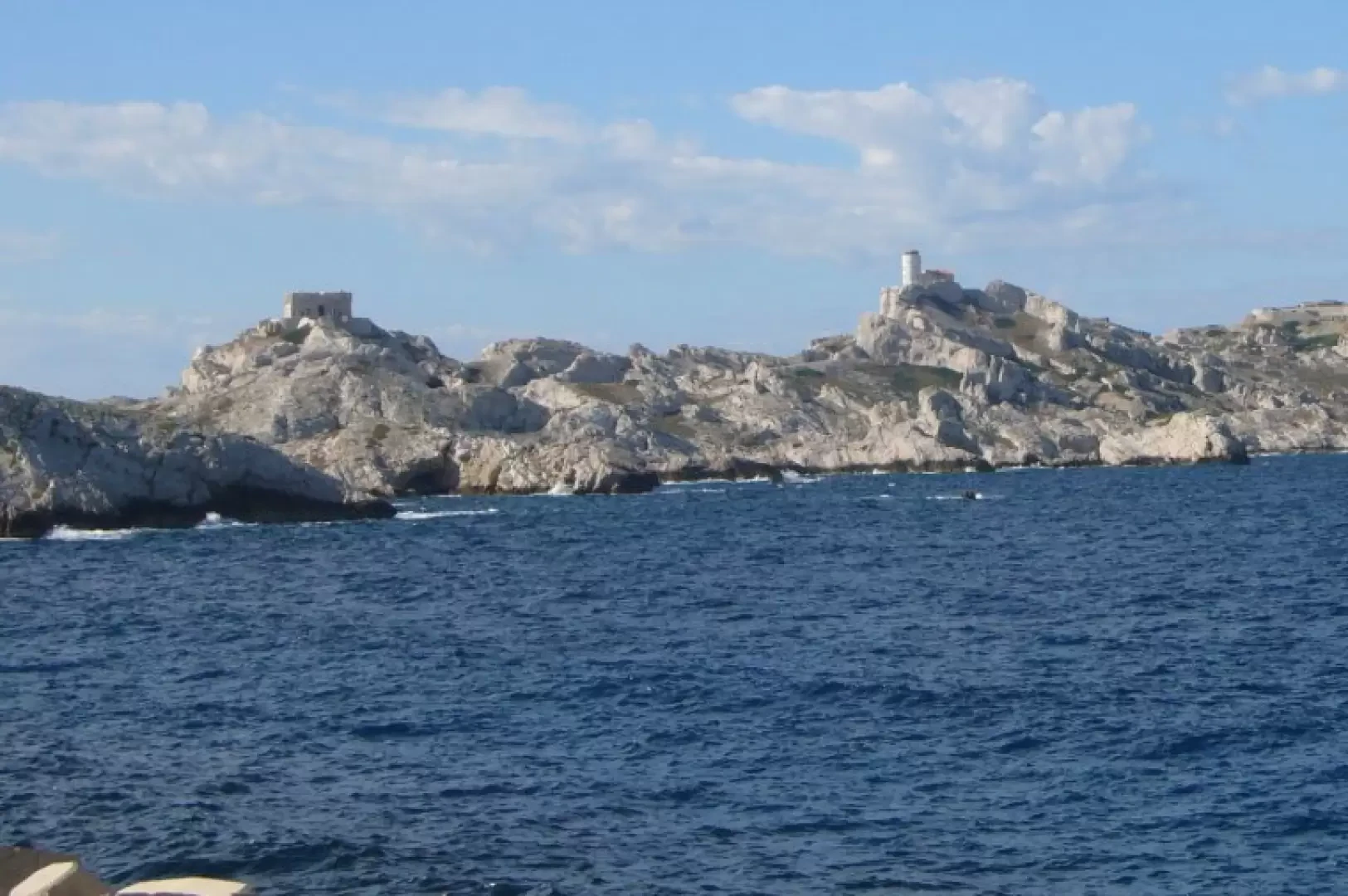
Introduction
A few minutes by boat from Marseille's Vieux-Port takes you to the islands of the Frioul mini-archipelago (If, Pomègues and Ratonneau, the last two joined by an artificial dam). They have a past as a quarantine port and/or lazaret for the infected, then military terrain (there are still 'closed' areas for this reason) and finally a nature reserve. The advice, of course, is to go there during non-tourist periods (June and September) when one can still enjoy the sun and sea without being in the company of hordes of tourists. Experts in botany and marine fauna, on the other hand, know for themselves which period is of most interest to them... You arrive at the harbour made up largely of the artificial dam and disembark on Ratonneau Island, characterised by a collection of rather questionable style houses. We walk all the way along the promenade and reach the dam that takes us to Pomègues.
.Description
The two islands make up the most arid corner of France, so, because of the climate, plan to have a good supply of liquids, as the only possible refuelling is in the port bars, which are anything but cheap. For a first panoramic view, after the dam take the left fork to Fort de Pomègues, which cannot be visited as it is a military garrison. From up there, you can see the gulf of Marseille and the city, as well as the whole of the island of Ratonneau, with the ruins of the former Caroline Hospital in one corner, which is being restored! A U-turn is made. Shortly afterwards, we take a shortcut that takes us back to the wide carriage road (only travelled by rare park authority vehicles), where several explanatory panels are placed explaining the botanical, geological and faunal peculiarities of the island. It takes about 1.5 hours to reach and pass the viewpoint formed by the Tour de Pomègues (which cannot be visited) and arrive at the Batterie de Cavaux (a former military post consisting of artillery emplacements, bunkers and various now-destroyed barracks). For the return journey, take the Sentier du Lys de sable, which leads to an inlet where the quarantine port of the city of Marseille once stood, and which now houses a few small yachtsmen and above all the tanks of an experimental aquaculture centre. Along both the outward and return routes there are small rocky inlets (calanques), easily reached from the main road, which provide an ideal environment for sunbathing and swimming (adjust according to the direction of the wind whether to stop on the northern or southern side of the islet). Back at the marina, we continue with the visit to the island of Ratonneau, continuing along the paved road that points from the port towards the city of Marseille, keeping almost level along the profile of the island. In 50' you pass a calanque where there is the only (perhaps) guarded beach; you pass the ruins of the former Caroline hospital, built at the windiest point to blow away the miasmas of diseases considered contagious and you arrive at a viewpoint over the If castle, famous above all for the literary inventions linked to it (Count of Montecristo) and the illustrious prisoners ever imprisoned in its dungeons (the Masque de Fer and the Marquis De Sade). Finally, always in 50' minutes, we reach the extreme point of the island towards the city of Marseilles: the Cap de Croix, with its inevitable decor of disused artillery emplacements. In 25', you then reach the highest point on the island, the ruins of Fort de Ratonneau, and in a further 30', you arrive at the opposite end of the island, the belvedere above Fort de Brigantin, which is partly restored and closed to the public. Return by a half-steep path in the direction of the port, not before stopping at the Plage du Grand Soufre, just behind the village. The return to the town is by scheduled motorboat. Photo gallery
